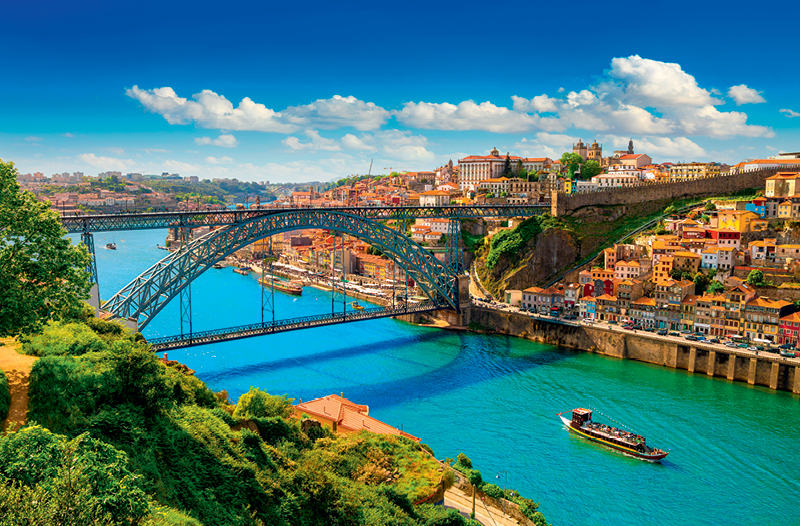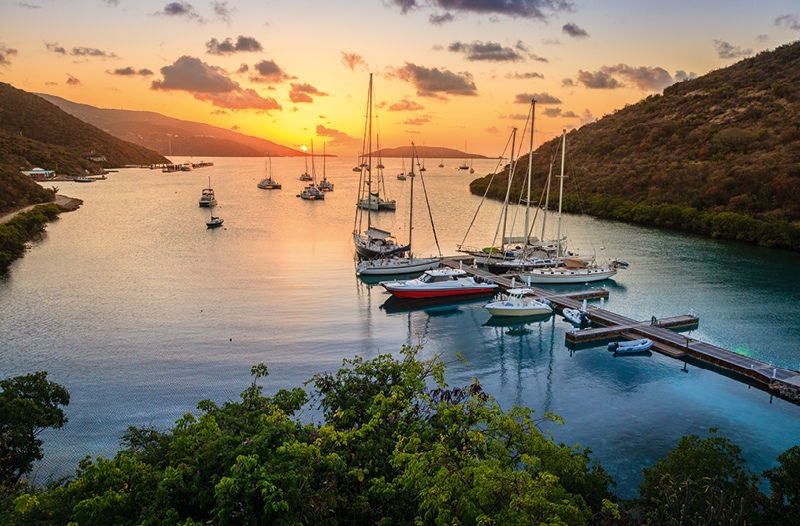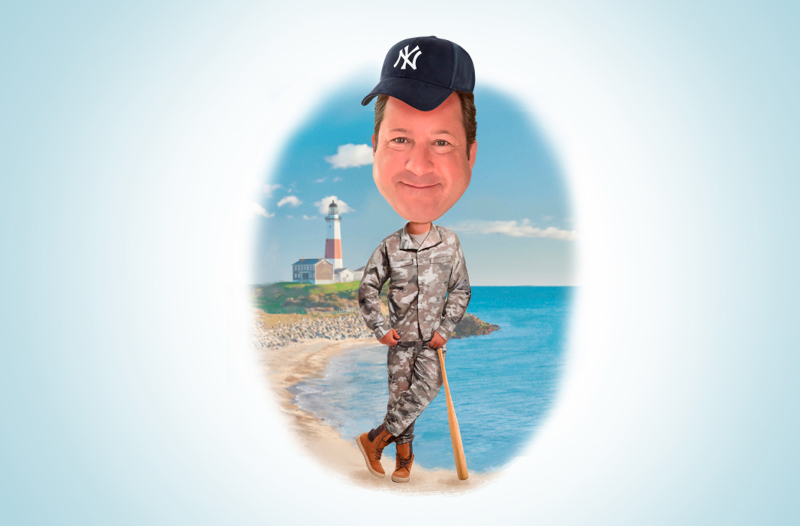
Wanderlust: The Galápagos Islands

From the moment you step foot on the Galápagos Islands—the historic archipelago 600 miles due west from Ecuador—your eyes pop wide open and seldom wish to close.
While waiting for a Zodiac to take you over to your expedition ship, coal-black marine iguanas shuffle at your feet, and magnificent frigate birds soar over the bay. Another seabird dives to your right, causing you to turn just in time to see a gang of pelicans skimming the sea’s glimmering surface in tight formation. A shape appears in the sea just a dozen yards away. Could it be a seal? A shark? Nature is everywhere here, and it does not fear mankind.
When to go: Galápagos is a year-round destination. December through May is the warmest, so it’s good for snorkeling, but some rain is likely. June to November is cooler, but that’s when the penguins thrive. The peak tourist season runs from mid-June through early September and from mid-December through mid-January.
Currency: U.S. dollars
Language: Spanish mainly, with English widely spoken in tourist areas
Companies to Consider: Celebrity Cruises, Silversea, Hurtigruten Expeditions, G Adventures
This is why, when you ask any travel lover to rank their bucket-list destinations—their once-in-a-lifetime dream destinations—the Galápagos Islands are usually near the top. Everyone knows this is a wildlife wonderland, but no one tells you the backdrop is just as remarkable. The smooth, low islands are dotted by fern-green forests, staked by red-tipped volcanoes and bordered by black beaches.
The animals and the landscape compete for your attention, but the animals usually win due to their continuous proximity and colorful names. On a ride around the tranquil mangroves of Black Turtle Cove, spotted eagle and manta rays swim beside the boat while a lava heron hops around the branches following your route. As well as the heron, you’ll frequently find the red lava lizard and the gray lava gull within eyesight. And let’s not forget about the lava cactus and the lava morning glory.
Unsurprisingly the word “lava” figures prominently in the names of the locals. The whole archipelago is volcanic, the beaches often black and spiky, with the youngest of the islands, Fernandina, a mere 700,000 years old. All of this adds to the allure of the islands, one that not even Charles Darwin could shake years after his personal theories evolved after visiting. You too will see the world differently after you experience this destination for yourself.

Creatures Great And Small
Cruise ships in the Galápagos vary their routes and stagger landings to avoid having too many people in one place at any one time. At each island, you can tick off an iconic species from your must-see list, such as marine iguanas, giant tortoises, flightless cormorants and blue-footed boobies.
Because the whole archipelago of 14 main islands, numerous smaller islets, and rocks is a national park, there are tight restrictions on where travelers can go. Non-specialist visitors have access to only around 1% of the landmass. Still, there’s a lot to encounter within that 1%. On Isabela, you can approach a tortoise so close you can hear it breathing. Sit down near one, and it will walk up to you—its thick, prehistoric legs moving with steadfast determination, its wrinkled neck craning out to eat anything in its path.

This magic happens with smaller species, too. One of the islands’ famous mockingbirds loves to come up to people and hop around their feet, playfully pecking at exposed toes. It would be hard to measure tameness, and no doubt the rise of tourists in the past 30 years has had a significant impact on animal behavior. But when you come from a heavily populated country where pristine nature is in short supply, seeing a tiny, delicate bird being so gregarious is a soul-fulfilling sight.
The wildlife parade follows you into the cobalt-blue waters. While snorkeling inside a cave to see penguins and marine turtles, you may spot small, white-tipped reef sharks hovering in the water, respectfully keeping their distance. Come up for air, and you’ll be greeted by blue-foots on the rock, their heads tilted quizzically, eyeing your gear.
Nature abounds in the Galápagos; you could easily begin to take it all for granted. But you shouldn’t, because everything here is incredibly beautiful and fragile. Thankfully, responsible tourism remains an essential means of protecting this unique and unforgettable paradise, giving you a chance to have a true once-in-a-lifetime experience.
Meet the Locals
Make no doubt about it, although the otherworldly landscape, luxurious ships and delicious Ecuadoran cuisine are true highlights of your journey here, the wildlife is the main attraction. Here are a few of the friendly locals you’ll be running into during your island-hopping adventure.
Lava lizard > Featuring gray scales with fiery red highlights, these playful lizards blend in perfectly with the volcanic backdrop. But since they’re the most abundant reptile on the islands, you’ll still see plenty scurrying around.

Galápagos penguin > The only penguins living north of the equator thanks to the cool waters of the Humboldt and Cromwell currents, these small birds are extremely agile, topping 21 miles per hour while hunting in the waters.
Flightless cormorant > Found on Fernandina and Isabela, these birds have no wings and no natural predators. To make up for their lack of aviation, they have adapted quite well to hunting for octopuses and fish hiding in the rock formations near shore.
Galápagos giant tortoise > The world’s largest tortoise can reach over 900 pounds in weight and is known to live for about 175 years. You’ll find variations of these fascinating creatures on seven of the Galápagos Islands, each a little different from its neighbors.
Blue-footed booby > You’ll often catch a blue streak in your peripherals as this bird takes a quick dive into the archipelago’s water to catch its prey. Its name comes from “bobo,” the Spanish word for clown, due to the comical, clumsy way it moves on land.

Cruise Corner
With most of its total landmass protected as national parks, only a carefully controlled inventory of small ships are able to visit this Darwinian fantasyland. Since ferries do not connect the islands and permits are required for landing on the majority of them, the principal method for visiting and exploring the Galápagos is by cruise ship. Here are a few things to know about today’s modern slate of Galápagos cruises.
Ships Made for These Waters > To lessen the environmental impact of tourism to this protected area, several cruise lines have built luxury ships especially for the Galápagos. Silversea’s Silver Origin and Celebrity’s Flora include features such as a dynamic positioning system, which allows these mega-yachts to remain stable without dropping anchors, solar panels to reduce emissions, and plenty of Zodiac boats to transport you to and from the islands.
Naturalists Leaders > Most ships include onboard naturalists who give enlightening lectures on the islands during your voyage. Certified by Galápagos National Park, these naturalists also lead small groups to shore, sharing their knowledge and helping you interact with the flora and fauna in a safe, educational way.
Island Activities > There are typically two excursions per day during your Galápagos cruise adventure. Led by experts, these range in activity level from simple walks and horseback rides along the shores to kayaking and snorkeling adventures and challenging hikes across the volcanic landscape.
Extended Journeys > Many travelers choose to make the most of their Galápagos adventure by visiting other high-profile destinations in this wondrous side of South America. Popular choices include the Ecuadoran capital of Quito, mystical Machu Picchu, historic Lima in Peru, and the ancient Inca city of Cuzco.




